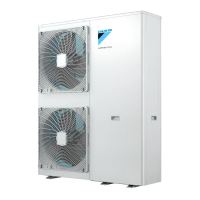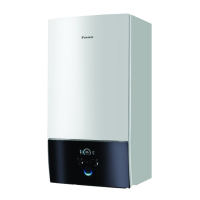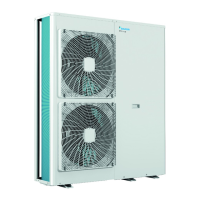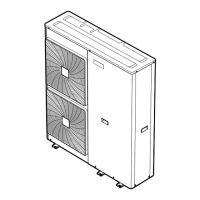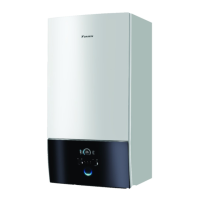Test Operation ESIE09-08A
80 Test Operation
1.2 Air Tight Test and Vacuum Drying
Air tight test: Make sure to use nitrogen gas.
Do this before powering the unit. (If the power has been turned on before the vacuuming has
been done, first setting 2-21 must be used. See
“Setting of Vacuuming Mode” on page 124.)
Setup:
The leak test must satisfy specification EN 378-2.
1. Vacuum leak test
Evacuate the system from the liquid and gas piping to –100.7 kPa (5 Torr).
Once reached, turn off the vacuum pump and check that the pressure does not rise for at least
1 minute.
Should the pressure rise, the system may either contain moisture (see vacuum drying below)
or have leaks.
2. Pressure leak test
Break the vacuum by pressurizing with nitrogen gas to a minimum gauge pressure of 0.2 MPa
(2
bar).
Never set the gauge pressure higher than the maximum operation pressure of the unit, i.e.
4.0
MPa (40 bar).
Test for leaks by applying a bubble test solution to all piping connections.
Make sure to use a recommended bubble test solution from your wholesaler.
Do not use soap water, which may cause cracking of flare nuts (soap water may contain salt,
which absorbs moisture that will freeze when the piping gets cold), and/or lead to corrosion of
flared joints (soap water may contain ammonia which causes a corrosive effect between the
brass flare nut and the copper flare).
3. Discharge all nitrogen gas.
Pressurize the liquid and gas pipes to 4.0 MPa (40 bar) (do not pressurize more than 4.0 MPa (40
bar)). If the pressure does not drop within 24 hours, the system passes the test. If the pressure drops,
check where the nitrogen leaks from.
Vacuum drying: Use a vacuum pump which can evacuate to –100.7 kPa (5 Torr, –755 mm Hg).
Connect the vacuum pump to both service port of the gas stop valve and the liquid stop valve to
increase efficiency.
1. Evacuate the system from the liquid and gas pipes by using a vacuum pump for more than 2 hours
and bring the system to –100.7 kPa. After keeping the system under that condition for more than 1
hour, check if the vacuum gauge rises or not. If it rises, the system may either contain moisture
inside or have leaks.
2. Following should be executed if there is a possibility of moisture remaining inside the pipe (if
piping work is carried out during the raining season or over a long period of time, rainwater may
1 Pressure reducing valve
2 Nitrogen
3 Siphon system
4 Vacuum pomp
5 Valve A
6 Gas line stop valve
7 Liquid line stop valve
8 Stop valve service port
9 Charge hose
1
249
R-410A
6
7
8
35

